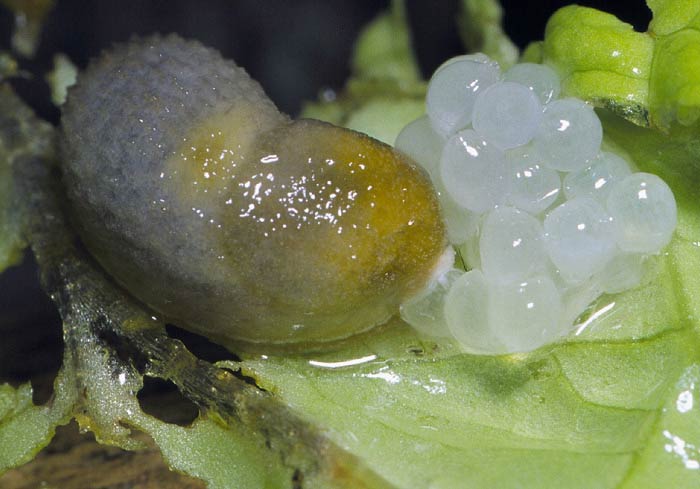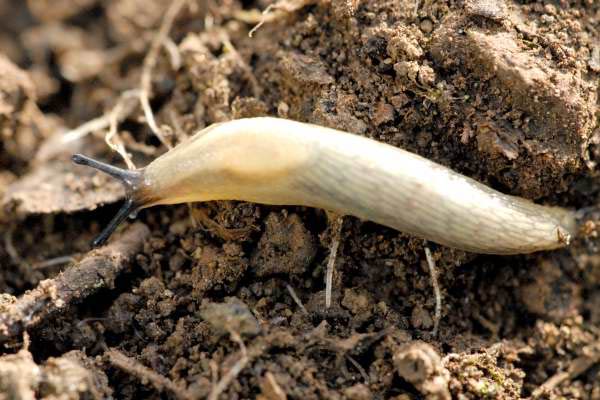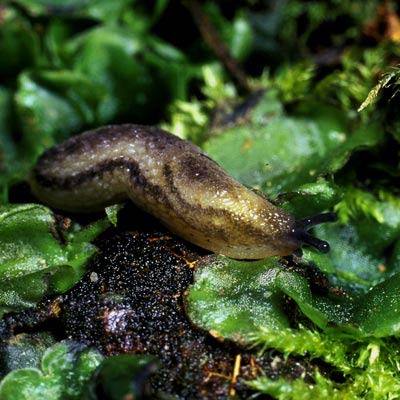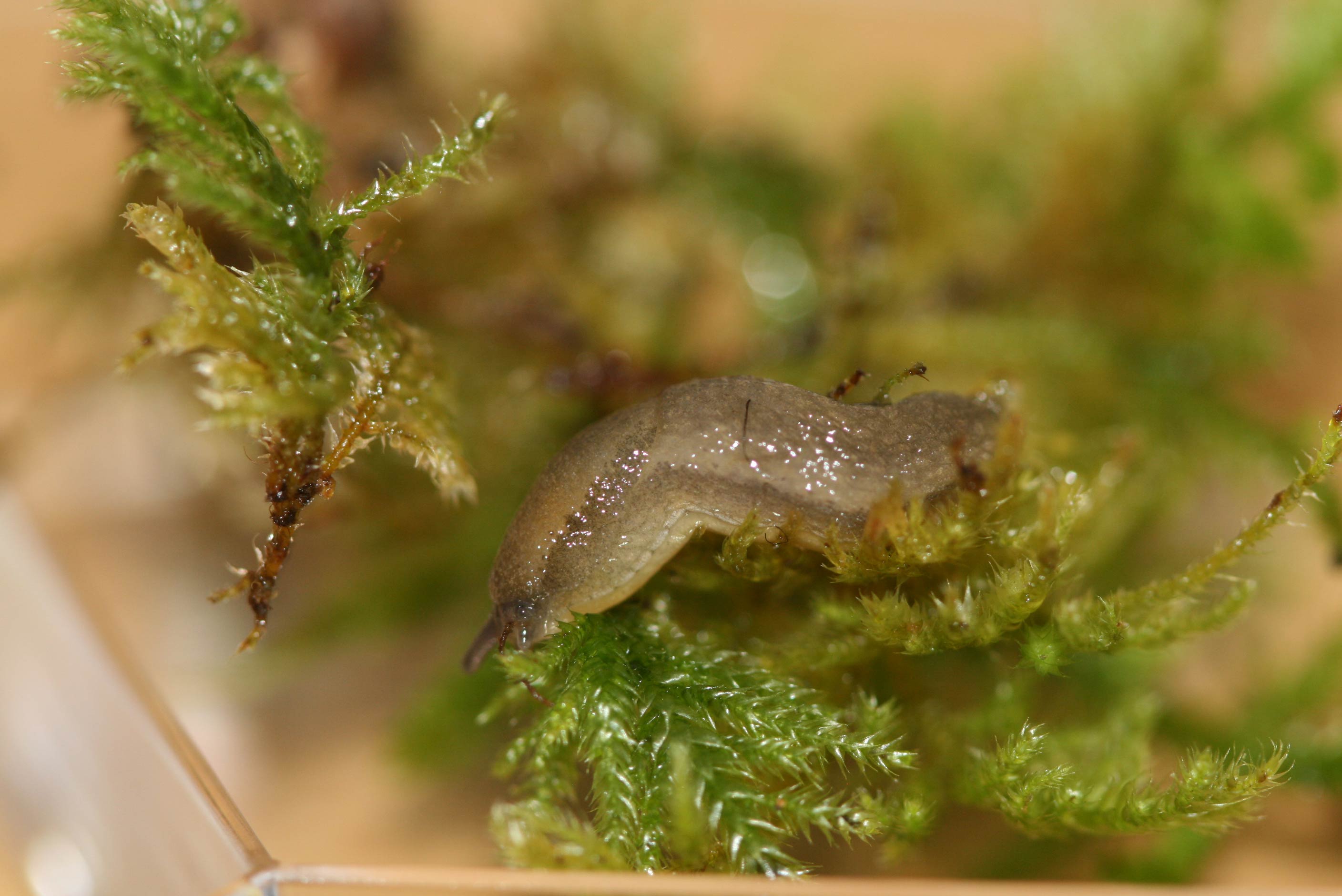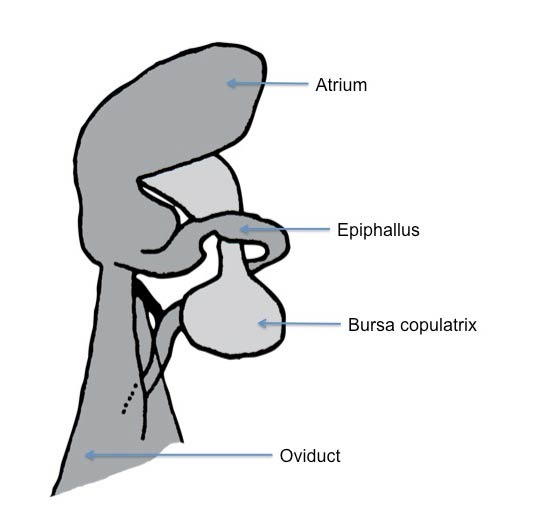Arion intermedius
|
Arion intermedius: adult with eggs. (Photo:© K. Ovaska, CalPhotos) |
|
Arion intermedius. (Photo:© J.K. Lindsey, The Ecology of Commanster) |
|
Arion intermedius. (Photo:© Dr. Roy Anderson, MolluscIreland) |
|
Arion intermedius: Contracted body not bell-shaped. (Photo:© Dr. Roy Anderson, MolluscIreland) |
|
Arion intermedius. (Photo:© Dr. Roy Anderson, MolluscIreland) |
|
Arion intermedius. (Photo:© R.J. McDonnell, University of California, Riverside) |
|
Arion intermedius. (Photo:© R.J. McDonnell, University of California, Riverside) |
|
Arion intermedius: genitalia (Photo: © modified from Kerney et al. 1983 by K. Weigel, University of Florida) |
Family
Arionidae
Species
Arion intermedius (Normand, 1852)
Common name
Hedgehog Arion, Hedgehog slugSlug:
A snail that either does not possess a shell or has one that is very reduced (no definite coiling) or internal.
Description
Arion intermedius is one of the smaller Arion species. This slugSlug:
A snail that either does not possess a shell or has one that is very reduced (no definite coiling) or internal.
ranges in length from 15-20 mm long with a yellow to grey body and dark grey tentaclesTentacles:
Sensory projections on the head end of a mollusc. There are generally two pairs; upper (posterior) and smaller, lower (anterior). The upper pair bears the eyes. In many snails the eyes are located at the tips of this structure; however, in Basommatophoran snail species, the eyes are located at the base of the tentacles.
and headHead:
The area of a mollusc's body that has the tentacles, eyes and mouth.
. The contracted body of this specimen is not bell-shaped in cross-section. Upon close observation the tuberclesTubercles:
An enlarged or raised region on the body of a slug. The shape of this structure is very variable. (See also tubercle)
are noted to form sharp, transparent points, giving the animal a prickly appearance. The tail of the slugSlug:
A snail that either does not possess a shell or has one that is very reduced (no definite coiling) or internal.
has a pale, narrow footFoot:
The muscular organ on the undersurface of the body of a mollusc upon which the animal rests or uses to crawl.
fringe and also lacks a keelKeel:
Also known as the carina. This is a longitudinal ridge that runs dorsally along the apex of the tail of the animal.
. The sole of the footFoot:
The muscular organ on the undersurface of the body of a mollusc upon which the animal rests or uses to crawl.
is quite distinguishable from other slugSlug:
A snail that either does not possess a shell or has one that is very reduced (no definite coiling) or internal.
species in North America by being yellow-grey to pale orange in color. The mucus produced by this species is pale yellow to bright yellow in color. Though this species is quite distinguishable, it can be mistaken for juveniles of other species (e.g., Arion rufus).
Native range
Western Europe
Distribution
North America:
- U.S.
- Canada
Pacific Islands: Hawaii
Australasia: New Zealand
Asia: Sri Lanka
Europe: Western and Central Europe
Ecology
The diet of Arion intermedius includes living plant tissue and fungi. In areas where it has been introduced, this species can be very destructive. It has been recorded to consume ornamental plants and field crops (e.g. wheat, corn). Self-fertilizationSelf-fertilization:
This is an event where an organism is produced by the fertilization of an egg by sperm from the same organism. (See also hermaphrodite)
is the primary means of reproduction although out-crossing has been noted to occur. Habitats for this species include fields, grassy roadsides, mature gardens and woods. It is capable of living up to a year.
Synonyms
References
Forsyth 2004Forsyth 2004:
Forsyth, R.G. 2004. Royal BC museum handbook: land snails of British Columbia. Victoria, Canada: Royal BC Museum. pp. 1-188.; Grimm et al. 2009Grimm et al. 2009:
Grimm, F.W., R.G. Frosyth, F.W. Scheler and A. Karstad. 2009. Indentifying land snails and slugs in Canada. Introduced species and native genera. Canada Food Inspection Agency. Ottawa, ON. pp. 1-168.; Kantor et al. 2009Kantor et al. 2009:
Kantor, Y.I., M.V. Vinarski, A.A. Schileyko and A.V. Sysoev. 2009. Catalogue of the continental mollusks of Russia and adjacent territories. Version 2.1. (Accessed online July 20, 2010); Kerney et al. 1979Kerney et al. 1979:
Kerney, M.P., R.A.D. Cameron and G. Riley. 1979. A field guide to the land snails of Britain and North-west Europe. Collins, London. pp. 288.; Meyer and Cowie 2010; Naggs et al. 2003Naggs et al. 2003:
Naggs, F., D.C. Raheem, P.B. Mordan, B. Grimm, K.B. Ranawana and N.P.S. Kumburegama. 2003. Ancient relicts and contemporary exotics: faunal change and survivorship in Sri Lanka’s snail fauna. Slug and Snails: Agricultural, Veterinary and Environmental Perspectives. BCPC Symposium Proceedings 80: 103-108.

